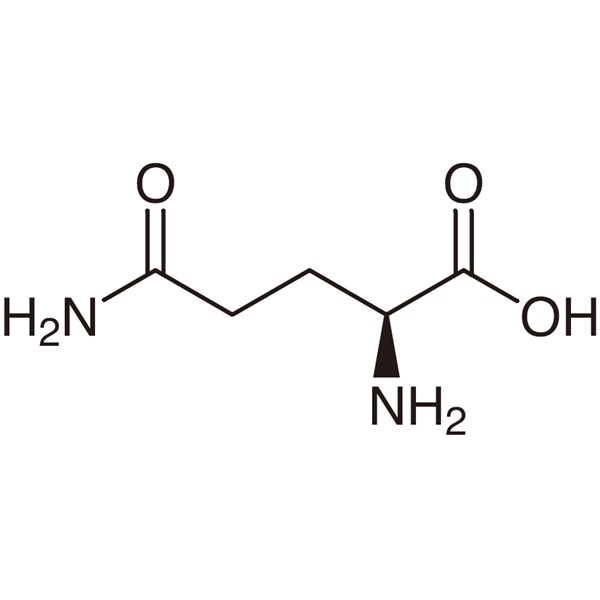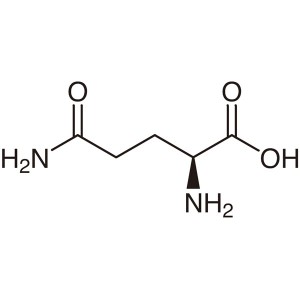L-Glutamine CAS 56-85-9 (H-Gln-OH) Assay 99.0~101.0% Factory High Quality
Shanghai Ruifu Chemical Co., Ltd. is the leading manufacturer and supplier of L-Glutamine (H-Gln-OH) (CAS: 56-85-9) with high quality, production capacity 5000 Tons per year. As one of the largest amino acids suppliers in China, Ruifu Chemical manufactures qualified amino acids and derivatives up to international standards, such as AJI, USP, EP, JP and FCC standard. We can provide COA, worldwide delivery, small and bulk quantities available. If you are interested in L-Glutamine, Please contact: alvin@ruifuchem.com
| Chemical Name | L-Glutamine |
| Synonyms | H-Gln-OH; Abbreviated Gln or Q; Laevo-Glutamine; γ-Glutamine; (S)-2-Aminoglutaramidic Acid; (S)-2,5-Diamino-5-Oxopentanoic Acid; L-Glutamic acid 5-Amide; 2-Aminoglutaramic Acid; L-2-Aminoglutaramidic Acid; L-Glutamic Acid γ-Αmide; |
| Stock Status | In Stock, Production Capacity 5000 Tons per Year |
| CAS Number | 56-85-9 |
| Molecular Formula | C5H10N2O3 |
| Molecular Weight | 146.15 |
| Melting Point | 185℃(dec.) (lit.) |
| Density | 1.47 g/cm3 (20℃) |
| Sensitive | Air Sensitive, Light Sensitive, Moisture Sensitive |
| Water Solubility | Soluble in Water, Almost Transparency (35 mg/ml at 20℃) |
| Solubility | Practically Insoluble in Ethanol and in Ether |
| Storage Temp. | Sealed in Dry, Store at Room Temperature |
| COA & MSDS | Available |
| Classification | Amino Acid Derivatives |
| Brand | Ruifu Chemical |
| Hazard Codes | Xi | RTECS | MA2275100 |
| Risk Statements | 36-36/37/38 | TSCA | Yes |
| Safety Statements | 26-24/25-36/37/39-27 | HS Code | 2922429000 |
| WGK Germany | 2 |
| Items | Inspection Standards | Results |
| Appearance | White Crystals or Crystalline Powder | Conforms |
| Identification | Infrared Absorption Spectrum | Conforms |
| Specific Rotation [α]20/D | +6.3° to +7.3° (C=4, H2O) |
+6.5° |
| State of Solution (Transmittance) | Clear and Colorless ≥98.0% | 98.9% |
| Chloride (Cl) | ≤0.020% | <0.020% |
| Sulfate (SO4) | ≤0.020% | <0.020% |
| Ammonium (NH4) | ≤0.100% | <0.100% |
| Iron (Fe) | ≤10ppm | <10ppm |
| Heavy Metals (Pb) | ≤10ppm | <10ppm |
| Arsenic (As2O3) | ≤1.0ppm | <1.0ppm |
| Foreign Amino Acids | ≤0.50% | <0.50% |
| Loss on Drying | ≤0.20% (105℃ for 3 Hours) | 0.03% |
| Residue on Ignition (Sulfated) | ≤0.10% | 0.04% |
| Assay | 99.0 to 101.0% (Titration on Dried Basis) | 99.9% |
| pH Test | 4.5 to 6.0 (1.0g in 50ml of H2O) | 4.6 |
| Origin | From Non-Animal Source | Conforms |
| Conclusion | Accords with the Standard of AJI97, USP41, FCC | |
| Main Uses | Amino Acids; Food Additives; Pharmaceutical Intermediates | |
Japanese Pharmacopoeia Reference Standards
L-Glutamine [56-85-9]
L-Glutamine, when dried, contains not less than 99.0% and not more than 101.0% of L-Glutamine (C5H10N2O3).
Description L-Glutamine occurs as white, crystals or a crystalline powder. It has a slight characteristic taste
It is freely soluble in formic acid, soluble in water, and practically insoluble in ethanol (99.5)
Identification Determine the infrared absorption spectrum of L-Glutamine as directed in the potassium bromide disk method under Infrared Spectrophotometry <2.25>, and compare the spectrum with the Reference Spectrum: both spectra exhibit similar intensities of absorption at the same wave numbers.
Optical Rotation <2.49> [a]20D:+6.3° to +7.3° Weigh accurately about 2 g of L-Glutamine, previously dried, add 45mL of water, warm to 40℃to dissolve, and after cooling, add water to make exactly 50 mL. Determine the optical rotation of this solution in a 100-mm cell, within 60 minutes.
pH <2.54> The pH of a solution prepared by dissolving 1.0 g of L-Glutamine in 50 mL of water is between 4.5 and 6.0.
Purity
(1) Clarity and color of solution—A solution obtained by dissolving 0.5 g of L-Glutamine in 20 mL of wateris clear and colorless.
(2) Chloride <1.03> —Perform the test with 0.5 g of L-Glutamine. Prepare the control solution with 0.30 mL of 0.01 mol/L hydrochloric acid VS (not more than 0.021%).
(3) Sulfate <1.14>—Perform the test with 0.6 g of L-Glutamine. Prepare the control solution with 0.35 mL of 0.005 mol/L sulfuric acid VS (not more than 0.028z).
(4) Ammonium <1.02>—Perform the test with 0.10 g of L-Glutamine, using the distillation under reduced pressure. Prepare the control solution with 10.0 mL of Standard Ammonium Solution. The temperature of the water bath is45℃ (not more than 0.1%)
(5) Heavy Metals <1.07>—Proceed with 1.0 g of L-Glutamine according to Method 1, and perform the test. Preparethe control solution with 1.0 mL of Standard Lead Solution (not more than 10 ppm).
(6) Iron <1.10>—Prepare the test solution with 1.0 g of L-Glutamine according to Method 1, and perform the test according to Method A. Prepare the control solution with1.0 mL of Standard Iron Solution (not more than 10 ppm)
(7) Related Substances—Dissolve 0.10 g of L-Glutaminein 10 mL of water, and use this solution as the sample solution. Pipet 1 mL of the sample solution, add water to make exactly 10 mL. Pipet 1 mL of this solution, add water tomake exactly 50 mL, and use this solution as the standard solution. Perform the test with these solutions as directed under Thin-layer Chromatography <2.03>. Spot 5mL each of the sample solution and standard solution on a plate of silicagel for thin-layer chromatography. Then develop with amixture of 1-butanol, water and acetic acid (100) (3:1:1) to adistance of about 10 cm, and dry the plate at 80℃ for 30 minutes. Spray evenly a solution of ninhydrin in a mixture of methanol and acetic acid (100) (97:3) (1 in 100) on the plate, and heat at 80℃for 10 minutes: the spot other than the principal spot obtained with the sample solution is not more intense than the spot obtained with the standard solution.
Loss on Drying <2.41> Not more than 0.3% (1 g, 105℃, 3 hours)
Residue on Ignition <2.44> Not more than 0.10%(1 g).
Assay Weigh accurately about 0.15 g of L-Glutamine, previously dried, dissolve in 3 mL of formic acid, add 50 mL of acetic acid (100), and titrate <2.50> with 0.1 mol/L perchloric acid VS (potentiometric titration). Perform a blank determination in the same manner, and make any necessary correction.
Each mL of 0.1 mol/L perchloric acid VS=14.61 mg of C5H10N2O3
Containers and Storage Containers—Tight containers.
USP Reference Standards <11>-USP Glutamine RS.
Identification, Infrared Absorption <197K>.
Specific Rotation <781S>: between +6.3° and +7.3°, determined at 20℃
Test Solution- In a suitable flask, accurately prepare a solution of about 40mg per ml in water at about 40℃. Cool and dilute with water to volume before use.
Loss on Drying <731>-Dry it at 105℃ for 3 hours; it loses not more than 0.20% of its weight.
Residue on Ignition <281> Not more than 0.30%
Chloride <221>-A 0.7-g portion shows no more chloride than corresponds to 0.50ml of 0.020 N hydrochloric acid: not more than 0.05% is found.
Sulfate <221>-A 0.8-g portion shows no more sulfate than corresponds to 0.25ml of 0.020 N sulfuric acid: not more than 0.03% is found.
Chromatographic Purity
Adsorbent: 0.25-mm layer of chromatographic silica gel mixture.
Test Solution: 10mg per ml, in water
Standard Solution-Prepare a solution of USP Glutamine RS in water having a known concentration of about 0.05mg per ml.
Application Volume: 5μL
Developing Solvent System: a mixture of butyl alcohol, water, and glacial acetic acid (3:1:1).
Spray Reagent-Dissolve 0.2g of ninhydrin in 100ml of a mixture of butyl alcohol and 2 N acetic acid (95:5)
Procedure-Proceed as directed for thin-layer chromatography under Chromatography <621>, then dry the plate at 80℃ for 30 minutes. Spray the plate with the spray reagent, heat at 80℃ for 10 minutes, and examine under white light:no secondary spot in the chromatogram obtained from the test solution is larger or more intense than the principal spot in the chromatogram obtained from the standrad solution (0.5%)
Organic Volatile Impurities, Method I <467>: Meet the requirements.
Asssy-Transfer about 150mg of Glutamine, accurately weighted, to a 125ml flask , dissolbe in 3ml of formic acid and 50ml of glacial acetic acid, and titrate with 0.1 N perchloric acid VS determining the endpoint potentiometrically. Perform a blank determination, and make any necessary correction (see Titrimetry<541>). Each ml of 0.1 N perchloric acid is equivalent to 14.615 mg of C5H10N2O3
Package: Fluorinated Bottle, 25kg/bag, 25kg/Cardboard Drum, or according to customer's requirement.
Storage Condition: Store in sealed containers at cool, dry and ventilated warehouse away from incompatible substances. Protect from light and moisture.
How to Purchase? Please contact Dr. Alvin Huang: sales@ruifuchem.com or alvin@ruifuchem.com
15 Years Experience? We have more than 15 years of experience in the manufacture and export of a wide range of high quality pharmaceutical intermediates or fine chemicals.
Main Markets? Sell to domestic market, North America, Europe, India, Korea, Japanese, Australia, etc.
Advantages? Superior quality, affordable price, professional services and technical support, fast delivery.
Quality Assurance? Strict quality control system. Professional equipment for analysis include NMR, LC-MS, GC, HPLC, ICP-MS, UV, IR, OR, K.F, ROI, LOD, MP, Clarity, Solubility, Microbial limit test, etc.
Samples? Most products provide free samples for quality evaluation, shipping cost should be paid by customers.
Factory Audit? Factory audit welcome. Please make an appointment in advance.
MOQ? No MOQ. Small order is acceptable.
Delivery Time? If within stock, three days delivery guaranteed.
Transportation? By Express (FedEx, DHL), by Air, by Sea.
Documents? After sales service: COA, MOA, ROS, MSDS, etc. can be provided.
Custom Synthesis? Can provide custom synthesis services to best fit your research needs.
Payment Terms? Proforma invoice will be sent first after confirmation of order, enclosed our bank information. Payment by T/T (Telex Transfer), PayPal, Western Union, etc.
L-Glutamine (H-Gln-OH) (CAS: 56-85-9) is an alpha-amino acid that is one of the 20 amino acids consisting proteins. L-glutamine is a non-essential amino acids and is also the most abundant amino acids in human bodies. It is involved in many important biological processes. L-Glutamine is an essential precursor for the biosynthesis of nucleic acid. It is a very abundant amino acid in the body, accounting for about 60% of the free amino acids in the body. It is a regulator of protein synthesis and decomposition. It is an important matrix excreted by the carrier kidneys that are transferred from peripheral tissues to internal organs. It plays an important role in the body's immune function and wound chemical book repair.
Function 1. L-Glutamine is the most prevalent amino acid in the bloodstream. 2. L-Glutamine is involved in more metabolic processes than any other amino acid. 3. L-Glutamine is converted to glucose when more glucose is required by the body as an energy source. 4. L-Glutamine also plays a part in maintaining proper blood glucose levels and the right pH range. 5. L-Glutamine serves as a source of fuel for cells lining the intestines. Without it, these cells waste away. 6. L-Glutamine is also used by white blood cells and is important for immune function. 7. L-Glutamine assists in maintaining the proper acid/alkaline balance in the body, and is the basis of the building blocks for the synthesis of RNA and DNA. 8. Amino acid drugs. For low acid, peptic ulcer. Oral 0. 5G, 3-4 times a day. For the improvement of intellectual development of children and Mental Disorder, alcoholism, epilepsy brain function. Daily 0.1~0.72g.
-
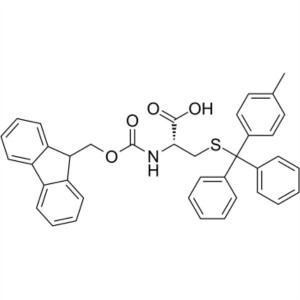
Fmoc-Cys(Mtt)-OH CAS 269067-38-1 Assay ≥98.0% (...
-
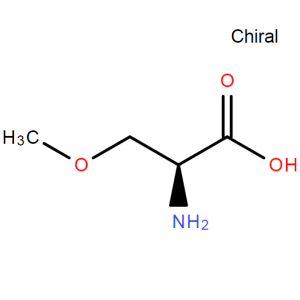
O-Methyl-L-Serine CAS 32620-11-4 Assay >98.0% (...
-
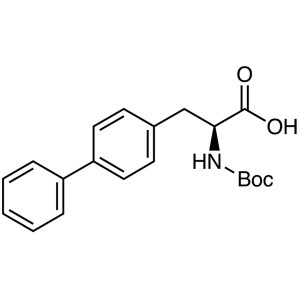
Boc-4-Phenyl-Phe-OH CAS 147923-08-8 Assay ≥98.0...
-
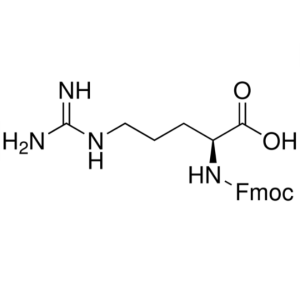
Fmoc-Arg-OH CAS 91000-69-0 Nα-Fmoc-L-Arginine P...
-
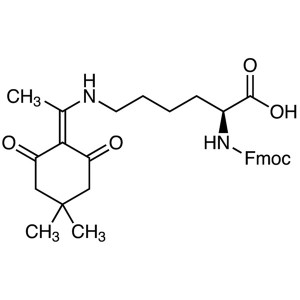
Fmoc-Lys(Dde)-OH CAS 150629-67-7 Assay ≥98.0% (...
-
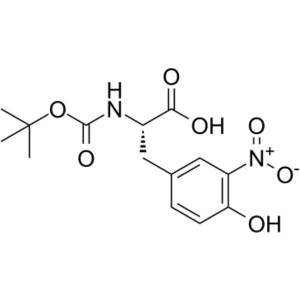
Boc-3-Nitro-L-Tyrosine CAS 5575-03-1 Purity ≥98...

